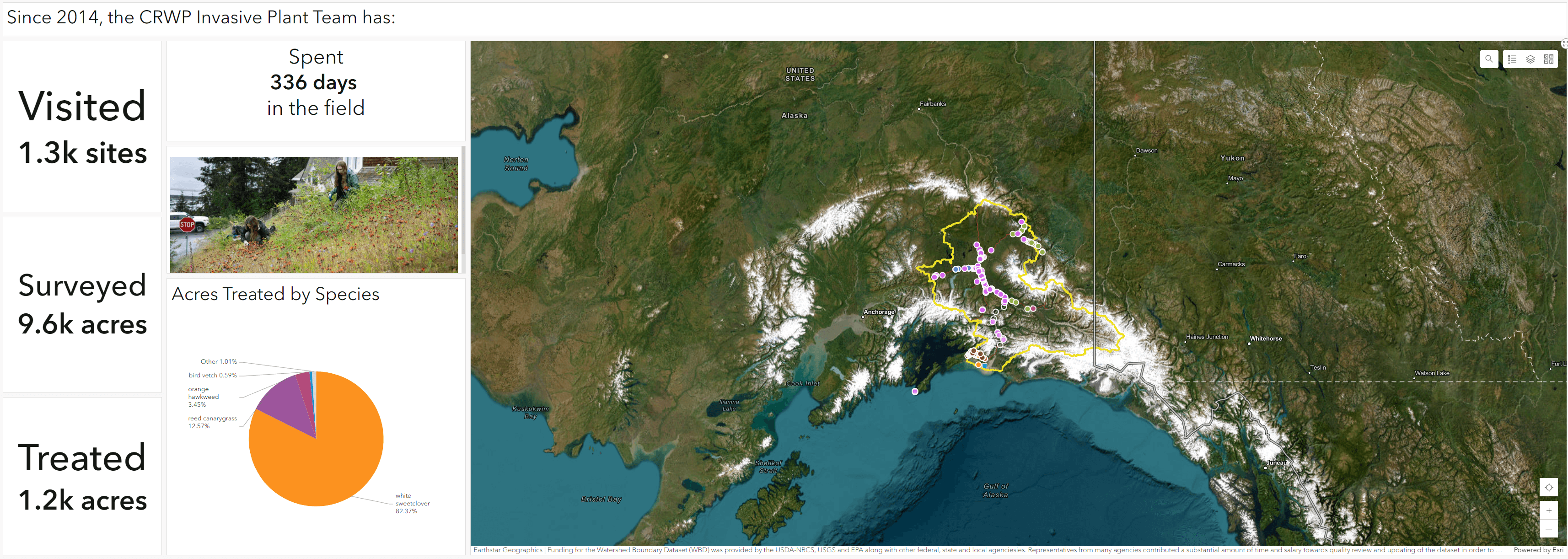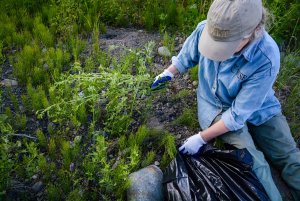
The Copper River Watershed Project works up river and down to educate, remove, and track invasive plants throughout the watershed. In the Copper River Basin, the highest ranked invasive plants are White Sweetclover and Bird Vetch. CRWP partners with the Copper River Native Association’s Youth Employment Training Initiative (YETI) interns to conduct weed pull events and float trips checking the river banks for spread of these targeted species.
In Cordova, the highest ranked invasive plants are Reed Canarygrass and Orange Hawkweed. CRWP seasonal technicians and volunteers work hard to keep these plants off of the Copper River Delta and away from salmon streams.
Learn more about Invasive Plant Management and the difference between Native Plant, Non-Native Plant, and Invasive Plant Species below.
Native Plant Species
Non-native Plant Species
Invasive Plant Species
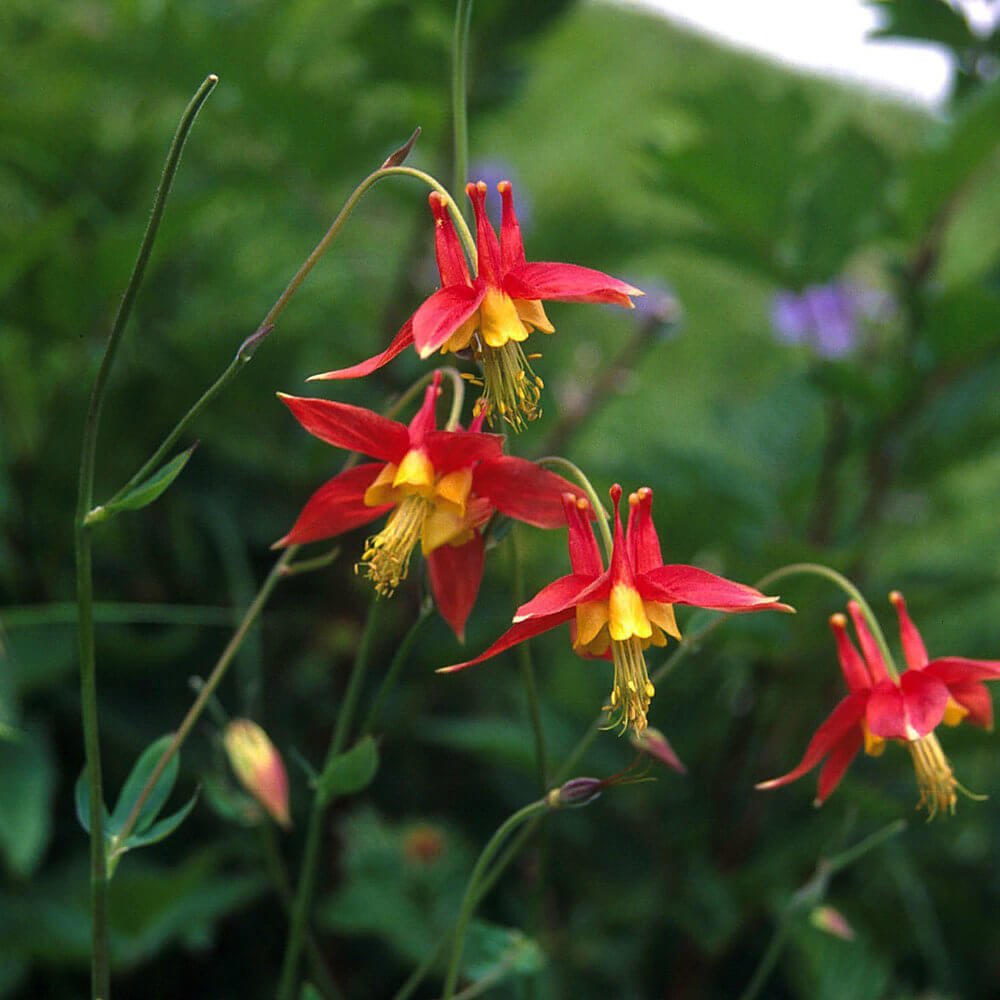
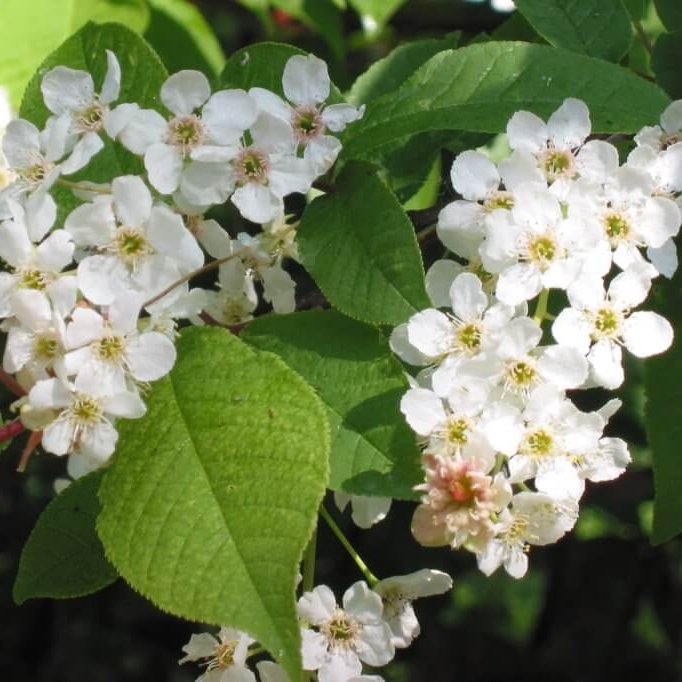
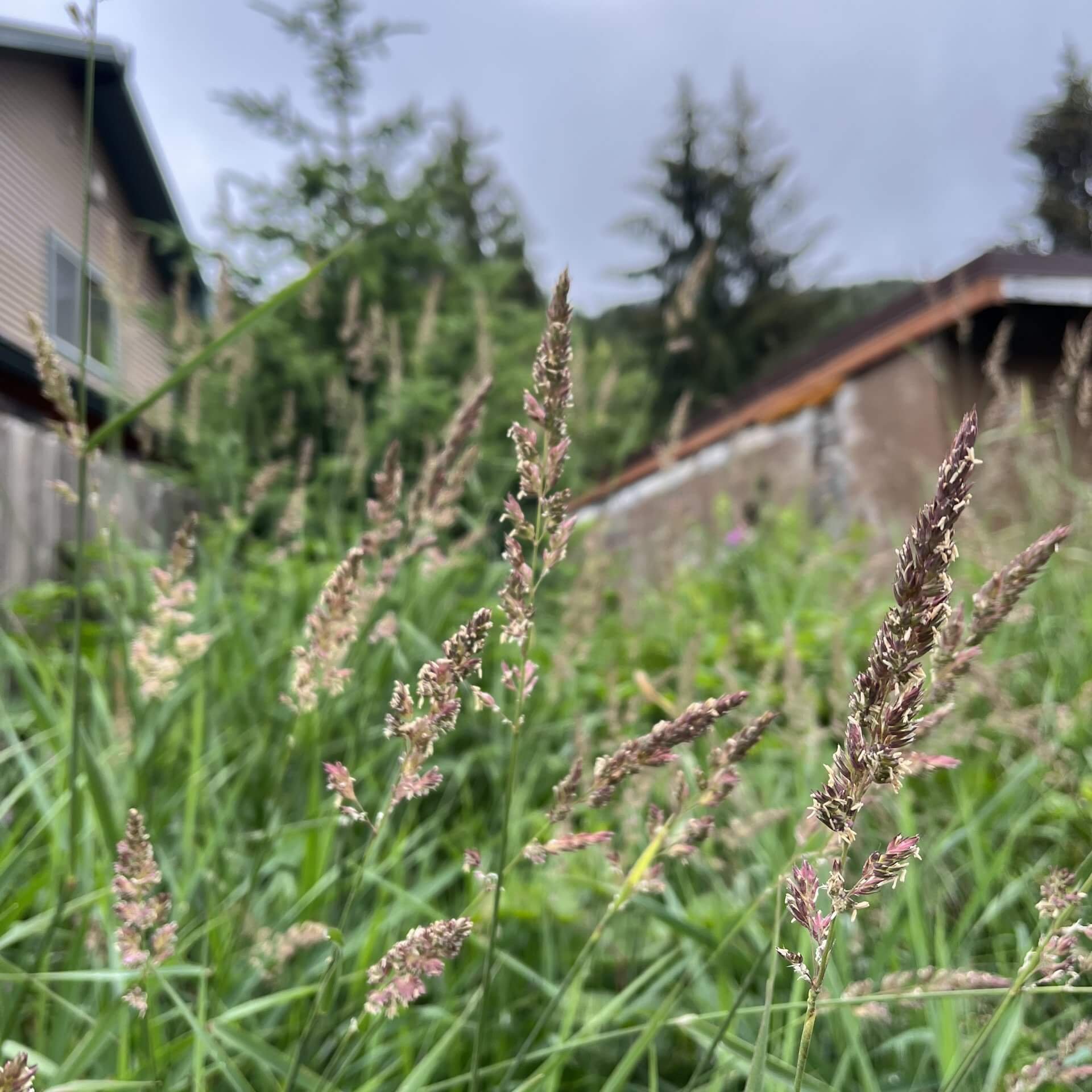
Native plant species are species that have existed historically in that area. These are plants that have existed in a location prior to European colonization in North America. They are plants that are adaptable to the climate and the soil conditions in that area. (source: National Audubon Society)
Non-native plants are species that have not existed historically in one area but have been introduced due to human activities. Non-native plants don’t necessarily pose a threat to native plants, but as mentioned before, non-native plants may not support ecosystem health as well as native plants do. (source: National Audubon Society)
Invasive plant species are non-native to particular ecosystems and the introduction of them is likely to cause “economic or environmental harm or harm to human health,” according to the National Invasive Species Information Center. Invasive species disrupt the growth of native plants, and root and spread quickly. They usually do not have any ecological checks, which means no predators are able to keep a species from spreading. (source: National Audubon Society)
What is the Invasive Plant Program up to?
Invasive Plant Management
Management of invasive plants can vary depending on species, location, and resources available. Management goals, however, are usually similar across all areas.
1. Prevent introduction – the easiest way to control invasive plants is to keep them from infesting your land in the first place! Learning how invasive plants are commonly transported and knowing which species are invasive can help avoid unintentional introductions.
2. Promote awareness of invasive plants – many landowners and managers and unaware of the harmful impacts of invasive plants, or which species should be on their watch list. Using a variety of educational tools, we aim to spread the word and raise awareness about invasive plants.
3. Contain, control, or eradicate high priority species – these efforts are usually species specific, but can include methods such as removing seed heads, tarping, mowing and cutting, hand pulling, or herbicide application.
4. Facilitate cooperation of invasive plant control efforts – successful control or eradication of invasive plants involves the efforts and cooperation of many stakeholders. Coordinating these efforts allows resources to be effectively and efficiently managed to reach a common goal.
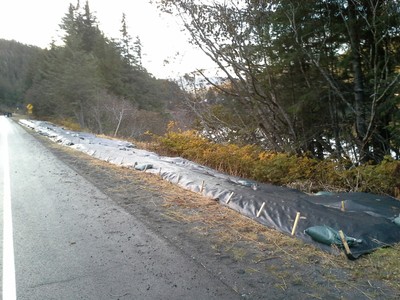
Tarping of invasive reed canarygrass at 2 mile of the Copper River Highway in Cordova. This tarp was installed with the help of volunteers in October 2014 and remained in place for several growing seasons before being removed. The area was then seeded with native vegetation.
Learn more about reed canarygrass and herbicide application here:
Additional Invasive Plant Resources
Whether you are learning about invasive plants in the Copper River Basin or trying to report a new invasive species, the following resources can be helpful to start investigating your role in invasive plant management.
Alaska Invasive Species Partnership
North America Invasive Species Management Association
Alaska Exotic Plant Information Clearinghouse

